Text
XX- A Brief Review
XX is an all female directed horror compilation film. The four directors are Karyn Kusama, Jovanka Vuckovic, Annie Clark (St. Vincent) and Roxanne Benjamin. The film is four short films with a continual interlude between each one. The end cap films are my personal favorites and are the most disturbing. The middle two are strange yet beautiful.
The first film is titled "The Box" is the story of a woman who watches her husband and two children wither away until death after a strange encounter with a man on a train carrying a present box. This short is my personal favorite because it never gives the audience any semblance of closer or peace. The reason for the demise of an entire family is left to the audience to ponder. The images of body horror, i.e. eating disorders and extreme weight loss are the most disturbing aspect of the film. There are also uses of cannibalistic imagery as the main character scrambles to find a way to help her family before it is too late.
The second film, "The Birthday Party" is a short about a wealthy, and obviously neurotic woman's attempt to make her daughter's birthday party successful after finding her husband dead in his office. This film is darkly funny and wildly stressful to watch. It is slightly confusing as it directly follows such a disturbing film, it almost feels strange to giggle along with the obscenity of the scenes you are now a part of.
"Don't Fall" is the third short in the film. I won't tell the entire plot, only that it is built around the "Don't Touch Shit You Shouldn't" trope. This film's plot is the least developed yet the CGI is the most beautiful.
The final short is "Her Only Living Son." This is a film about a woman preparing to celebrate her son's 18th birthday while he is devolving into more and more violent behavior. The audience begins to learn that this may be due to a dark pact made in his infancy.
XX is a much needed film as it gives women a voice in a male dominated genre and I highly recommend it to anyone who is a fan of Horror. It is securely placed within many tropes of the genre and yet has moments of beautiful and disturbing creativity. 8/10 would recommend.
#horror#Horror Movies#Horror genre#short story#xx#st vincent#annie clark#jovanka vuckovic#roxanne benjamin#karyn kusama#spoilers#movie review
2 notes
·
View notes
Text
GET OUT- A Not So Brief Review
CW: Racism, spoilers

Jordan Peele's horror film GET OUT has been getting rave reviews from critics and audience members alike. This praise is incredibly well deserved. In this analysis I want to look at the film's linear progression to illustrate its well crafted use of symbolism, and the horror that is the do good white liberals of today's left. Although I have a few things to say before I get started. First off, I am a white writer and thus please feel more than free to take what I say with a grain of salt, or ten. This film illustrates an experience I have only witnessed from the POV of the villain and I am hoping the subtleties of the film were not lost on me. Secondly, the movie is hyper aware of the genre it is in, it uses several horror tropes which may be eye roll inducing to those who are fans of the genre. But, I believe it uses these tropes in meaningful ways that add to the plot as well as give audiences a few good jump scares just to keep them on their toes. Jordan Peele's script and direction are superb and GET OUT is one of the most successful horror films of the last five years, at least.
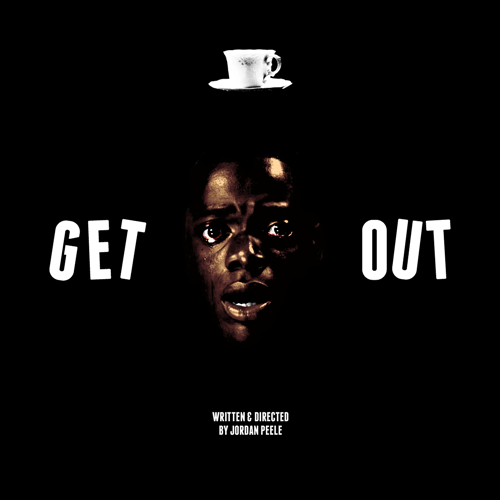
The film begins immediately with a strong horror intro. We meet a young, black man in a assumed white suburb on his way to a meeting. It is night and he is alone. As he is looking at his phone for directions a car pulls up beside him. He tries to avoid the car only to see that it has stopped and the door is open. As he sees this a masked man comes up behind him and chokes him until he is unconscious. The masked man drags the first man into the back of the car. This scene sets up the tension of the film from the get go, and initiates what will be one of the most important symbols/motifs of the movie; that of prey vs. predator.
After an introduction to our protagonist, Chris, played by Daniel Kaluuya and his girlfriend Rose, played by Allison Williams we see the two begin the discussion on race. Chris asks Rose if her parents, who they will be visiting, know he is black. She says no and asks if they should know. Chris does not answer to which Rose says "My father would have voted for Obama for a third term if he could have." A cringe worthy remark, that 99% of the white audience is guilty of. We see the dynamic of the try hard, fail hard white liberal established from this very first interaction. The following scene shows the two driving to Rose's parent's house in the New England woods. During their drive they come across and hit a deer. Chris feels the need to go and see the deer as it lay dying in the woods. The predator, humans, and prey, deer is being shown again but this time it is being resignified. The predator is not an active one but an inactive bystander. This also gives the audience the first glimpse of the film's most important symbol. Deer as death.
This scene concludes with the two speaking with a police officer. He asks Chris for his ID even though he was not the one driving. Rose questions the officer's motives and causes a small scene. Chris tells later that he found that moment of action to be hot. In this brief moment she is savior. Once the two arrive at the home of Rose's parents, a large home surrounded by woods. A staple of the horror genre. The audience is bombarded by uncomfortable comment after uncomfortable comment from the Armitages. One that sticks out is Mr. Armitage's repeated comments about the need to kill deers. It is a strange comment that feels both concerning and unnecessary within any normal conversation. Another horror trope we are introduced to is the Stepford Wives type servants; Georgina and Walter. They are the only other People of Color that the audience sees at the Armitage residence. They have painful smiles plastered on their faces and cannot hold a genuine conversation. These two characters play a large part in the culmination of the plot but are not key in the development of the image of the deer.

Arguably the most important version of the symbol of deer as death is that of Chris' mother's death. During his first, unwilling, hypnotism session with Mrs. Armitage, which happens the first night of their stay, he discusses with her that his mother was killed during a hit and run. He tells her that he did not call the police or family when she did not come home and expresses deep guilt at this. Later when discussing this with Rose he says that his mother lay dying in the cold, on the side of the street while no one looked for her. In this moment she has been reduced to no more than road kill. She is the deer that they hit on their way to the Armitage's home. She is the prey to the predator which we have seen since the opening of the film.
The film explores what it means to be predator and prey in several disturbing ways. One of the most unnerving and repulsive scenes is the first family dinner. Rose's brother, Jeremy has joined them and immediately shown his character as volatile and laced with racism. During the dinner Jeremy is loud and takes over the conversation. He asks Chris if he likes sports, specifically MMA fighting. Chris says no, that the sport is too brutal for him. Jeremy proceeds to tell Chris that with his "genetic makeup" he could be an amazing fighter. He would just need to train his raw strength. Jeremy describes Chris as if he is an animal which would need to be broken and then could master the art of violence. Framing Chris in these tropes of racism has in a round about way bring back the idea of the deer. Chris is simultaneously prey for Jeremy but seen as a predatory creature.

In order to further the analysis of the deer as death symbolism I will now skip to the climax of the film. This is once Chris learns of the Armitage and their neighbor's evil scheme. That term is not used jokingly. He learns that this community is kidnapping black people to take parts of their brains and insert them into their own brains in hopes to gain various traits. The trait that Chris is to be harvested for is artistic eye and talent. In this climax he is drugged and tied to a chair so he can be forced to watch a video about the procedure he is about to be forced into. Above the old television set is a mounted stag's head. Initially this is to represent the Armitage's power of his body. He is the beast that they have subdued. During the climax of this scene Chris escapes and pries the head off the wall. He uses it then to stab Mr. Armitage in the throat. Thus subverting the idea of who is prey and predator. Once the first Armitage is dead he goes out to make sure the other three do not come after him. He ascends from the basement and behind him on a table are small statues of stags. Here the audience sees that Chris' role is both that of prey and predator. His role is finally and wholly subverted with the death of Rose. She is inevitably shot down outside of the home, in the driveway leading out by Walter. Chris considers strangling her and ending her completely. He chooses not to. His humanity is much more evident than that of the Armitage's. He is neither prey nor predator. He is a human being.
As Chris leaves (the comedic character, Rodney, and my personal favorite character due to his Jeffery Dahmer jokes has arrived in time to take Chris away) Rose begs him to save her. He does not, leaving her in the rode to die. This image is a direct link to the death of the deer in the beginning of the film and to his mother's death. In this moment the predator does not become prey but instead is stripped of her power and is destroyed because of this.
#horror#horror movies#Horror genre#get out#jordan peele#daniel kaluuya#allison williams#movie review#review#movie analysis#horror tropes#symbolism#trigger#trigger warning#spoilers
0 notes
Text
Spell Craft Sale
I am need of the money so I am selling my spell craft!!
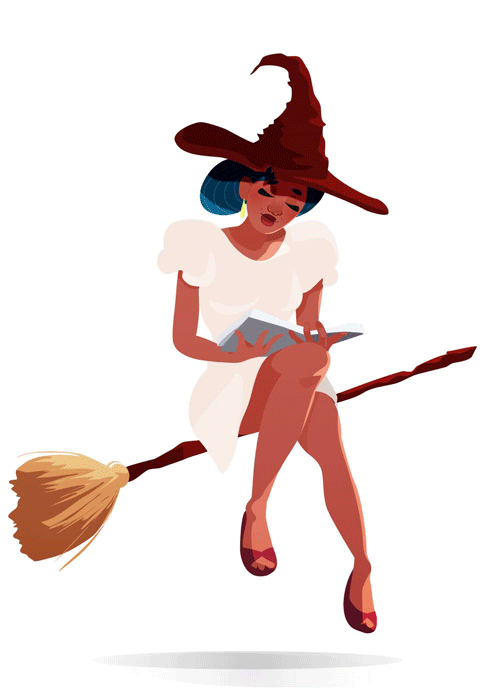
Love spells- $5
Protection spells- $5
Sleep spells- $5
Curses- $10-$20
Other various spells- $5
Charms- $7
misc.- $5-$10
Please hit me up! I am a friendly witch in need of monies!
0 notes
Text
Gutshot by Amelia Gray- A Brief Review
Gutshot by Amelia Gray is a compilation of short horror/ surreal stories. Her writing is a strange mix of blatant language and disturbing plot lines. The stories are shaped into vignettes which gives the reader a brief look into the uneasy world that Gray has created. Each of the stories sort of plops the reader into this world with the expectation that you will have to come to an understanding of this realm immediately. The assumption of understanding from the narrators continues the uneasy feelings the reader has.
This book is one I would highly recommend to any and all readers of the grotesque and uncomfortable. It will leave you feeling unsure of your surroundings and of the inner workings of your own brain.
5 notes
·
View notes
Photo
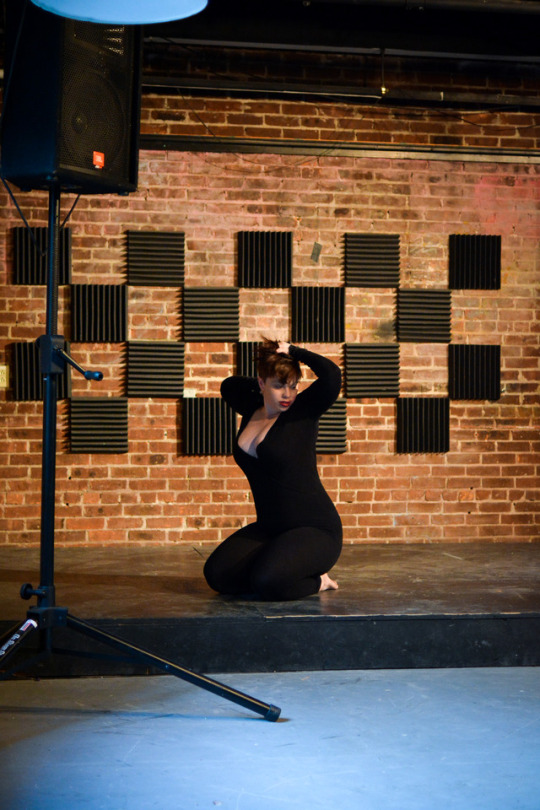

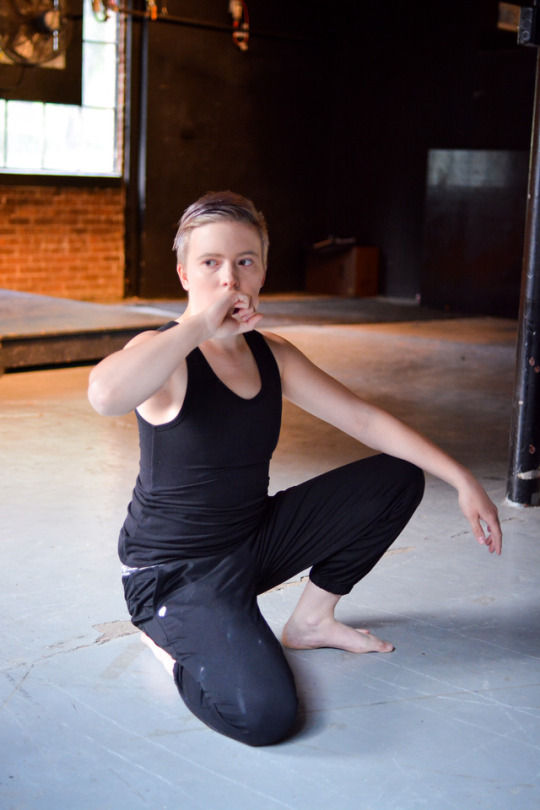
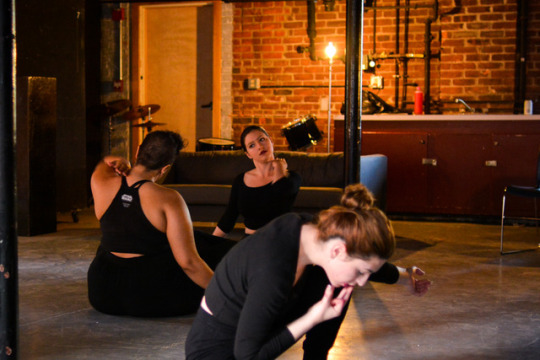
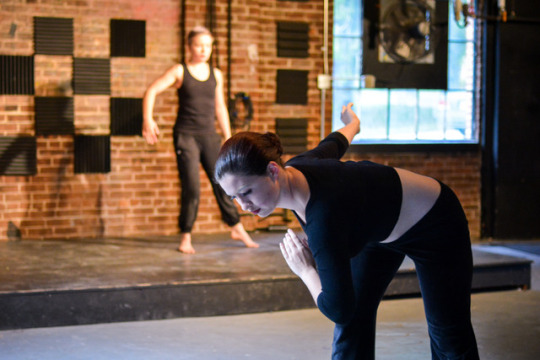


A Dance in Horror (2016)- Choreography by Sophie Marie
0 notes
Text
A Girl Walks Home Alone at Night- My Thoughts
Vampire's and sexuality have always been linked in interesting and at times frustrating ways. Everyone has experienced the way heterosexual violence and queer fetishization appear frequently in the Vampire Genre. Ana Lily Amipour's 2014 film A Girl Walks Home Alone at Night is no different in this fact, yet her film depicts the female vampire through a modern sexual lens. The Girl, the Vampire, is not the only protagonist in this film, the secondary protagonist Arash, is a male who lives in the same Iranian city as the Girl. Their relationship drives the progression of the film. The audience gets to see the Girl through their own eyes as well as the male Protagonist, Arash's eyes. These multiple views of her vigilante and violent actions add depth and at times confusion for the audience.
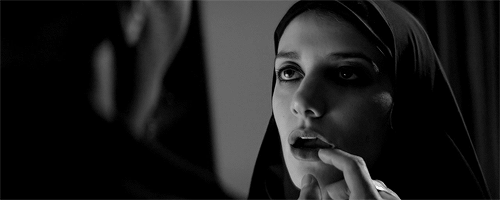
The film centers around Arash's home life with his drug addicted father, Hossein. His father's addiction and their debt leads Arash into dealing drugs. Through his drug connections and a late night party in the ghost town, Bad City, where the film is based, he comes to meet the Girl. He does not know at the time that the Girl is also the one who has killed his father's dealer and is following, and protecting his father's favorite prostitute, Atti. The two strike up a romance which culminates in their departure from Bad City after Hossein's death.
When the audience is introduced to the Girl we see her in her apartment, dancing alone to an American record. This scene is exceedingly lonely. She dresses herself in a black and white shirt, black pants, a Chador, dark lipstick, black eyeliner. This outfit will be seen throughout the film as her Killing Clothing. She seems to be lonely as she goes through her routine and prepares for what we come to learn will be the hunt. After her first kill we see her sitting in the bathtub with a sad look on her face. Her loneliness after her kill is painful to watch.
The first victim we see her take is Saaed, the abusive drug dealer. She watches him engage in sexual acts with one of his prostitutes, Atti, and then refuse to pay her. He pulls her from the car and yells at her. The Girl has seen this all. Later when he is strolling the streets he finds the Girl and takes her home with him. After displaying his wealth and machismo he attempts to seduce her. She slowly opens her mouth revealing her fangs. Following this she counters his seduction by putting his finger in her mouth and biting it off. Subsequently, after making sure he has felt the full weight of his own fear she kills him, leaving his body to rot in his over glamorized home. Her first kill of the film is a justified one. One the audience is rooting for. He is a repulsive man who has shown himself to be cruel and violent towards women and addicts.

The next time the Girl is stalking she sees Hossein with Atti. He is obviously irritating her and she tells him to leave her alone. The Girl plays with his head a little by pretending to be almost like a mirror on the other side of the street, before leaving him alone to terrorize a local poor boy. She shows the boy her fangs and speaks with her true voice - a deep, almost demonic voice- scaring him to the point of tears. She asks him over and over if he is a good boy. Upon his final response of "yes" she tells him she will be watching him for the rest of his life so she will know if he ever becomes a bad boy. The assumption is that to become a bad boy is to treat women poorly, like the men in the community of Bad City. The Girl's actions have been fueled by the violence and disrespect towards the women of this community. She is seen as a vigilante, a dark hero. This is illustrated further when she and Atti finally meet. She tells Atti that she has been following her. She does not tell Atti that she has been protecting her, but the prostitute understands this. Atti realizes the implications of this strange relationship with the Girl's last kill of the film.
Her final kill of the film is Hossein himself, Arash's father. The Girl witnesses Hossein force Atti to take heroin in order to have a "good time" during a liason. After she has killed him, she and Atti leave the body in public where Arash finds him. The audience sees three of the Girl's kills; Saaed, the abusive dealer, Hossein, the abusive addict and a random homeless man. The third kill is after she scolds the young boy and threatens him to make sure he continues as a good boy. Thus, each of these kills are motivated (outside of her need to drink blood) by some sort of protection of women. Women in this case exemplified by the prostitute Atti. She is a vigilante for the women of Bad City.
Over the duration of the film the Girl and Arash meet and begin a romantic, but never explicitly sexual relationship. Arash develops strong feelings for her quickly. In one of their meetings she tells him she is bad and has done bad things. This is the first time the audience sees her put a judgment on her actions. Up until this moment we believe that she is committing these acts for reasons she holds dear. But, in this moment she has degraded her protection of Atti in the face of a man. As I watched this I wondered, was this moment simply another use of the trope of the tragic monster in horror believing it did not deserve love? Or, does the presence of a man in her life really change the Girl's view of herself and her actions?
In the final moments of the film, after discovering his father's body, Arash asks the Girl to run away with him. She begins to pack her bags, and puts on her killing costume. Arash sees his cat in her apartment, which she gained after killing Hossein. Arash realizes in this moment what she is. What she meant by saying she was bad. Once they are in his car and leaving Bad City Arash pulls the car over and leaves for a few minutes. In my first viewing of the movie I assumed he was preparing to kill the Girl, or at least try to. But instead he returns to the car, they smile at each other and drive off. This moment added with the Girl's admission of "being bad" confused me.
Again I asked what does Arash's presence in her life do for her? She is now seen outside of her kills by a man who finds her beautiful. He is her link to the human world which she has not had before. His acceptance of the horror of her being has in a way made her more lethal. He has not condemned her but instead given her a passage into human culture in which she can hunt. Though, is this an affirmation of her as a vigilante? Or, is this need for a male to accept her in order for her crimes to be justified simply a sexist assertion of power over a strong female character? I personally am unclear on which of these two I find to be more true. What are your thoughts?
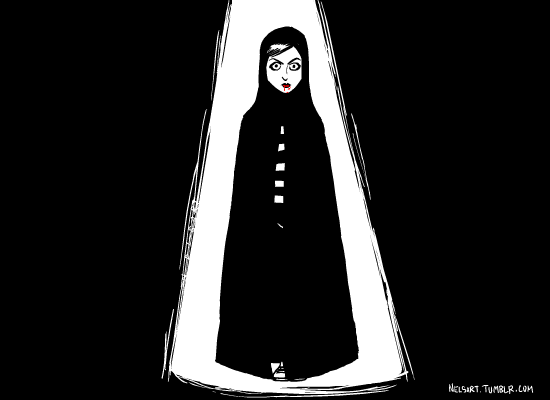
#horror#Horror movie#Horror genre#vampire#Black and White#a girl walks home alone at night#iranian film
3 notes
·
View notes
Text
The Babadook: The Man in the Closet and Childhood Abuse
TW: Abuse
Jennifer Kent's 2014 masterpiece The Babadook touches on the themes of depression, grief, learning disorders and child abuse. This post will only look into the last of those themes, though the other three are immensely important to the film.
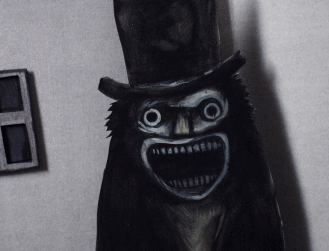
The movie follows widow Amelia, played by Essie Davis and her son Samuel, played by Noah Wiseman. We see Amelia's exasperation due to her grief, depression and lack of knowledge on how to raise a son that reminds her of her husband's death and has a serious learning disorder. The one moment of calm in their life is when she sits down at night to read her son a bedtime story. That is, until they find the book The Babadook. The book is the story of a monster by the name Babadook that haunts then possesses its victims. After the two read this storybook the Babadook begins to haunt them in their everyday lives.
Due to Amelia's sister's lack of understanding of Amelia's grief and Sam's learning disabilities she removes herself from their lives. She begins the process of isolating Sam with his mother. A reference to the isolation forced upon victims by their abusers. Towards the end of the film, Sam's one friend - their elderly next door neighbor- asks if Sam would like to spend the night at her house. Amelia refuses the offer. And eventually cuts the phone lines when Sam tries to call the neighbor. Thus, completing the isolation.
After Amelia's first attempt to destroy the book it returns, and it has changed. The story now has Amelia and her son, Sam in it as characters. The book depicts her killing her son, followed by herself. Like abuse, the book returns but changes to fit each situation. The creature itself makes itself known in her moments of exasperation. For example, when Sam is asked to leave his cousins birthday party. The two are in the car and they hear loud pounding on the roof. Amelia is at a loss at how to deal with her son properly. In this moment where she wishes to lash out the monster does it for her. Many abuse victim's discourse shares the idea that an abuser becomes another person in moments of anger. This transformation from Amelia's anger to the monster's attacks is a literal interpretation of this idea.
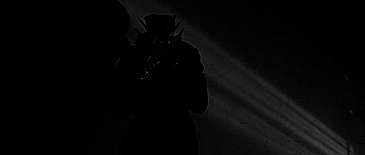
The film takes place in the days leading up to Samuel's birthday which is also the day his father died. Multiple characters reference Amelia's behavior and mental status changes for the worse during this time frame each year. Her next door neighbor even asks if Amelia would like Samuel to sleep over at her home because she "knows this time of year is difficult" for Amelia. The abusive cycle is established not by the audience witnessing it throughout the years but by the character's past knowledge. In the first scenes Samuel is removed from school for bringing a home made weapon. He has several in his and Amelia's home. He says they are to protect him and his mother from the monsters, namely the Babadook. During the climax of the film he uses them against his mother in order to subdue her. She becomes the monster they need protecting from.
The second half of the film centers on the Babadook's physical possession of Amelia. He jumps into her mouth as she lays in bed, thus making the transformation from mother to monster complete. In this half of the film there is no separation between her anger and the monster's attacks. The audience gets to Amelia directly being the monster- the abuser. Sam tries to get through to her by tying her to the basement floor and reminding her that he loves her. But she has to stop the abuse herself. She talks to the monster (herself) telling it "You cannot have my son". She has to fight with her own behavior to make sure it does not swallow her son. She fights for her son like she will fight for his forgiveness. This is how the monster is subdued, but not destroyed. There is no destroying this kind of monster. It lives on in perpetrator and victim alike. The Babadook is sent to the basement, slamming the door behind itself.
After monster is subdued we see Sam's birthday party. During the preparations Amelia is gardening. She sees a single black rose. A beautiful yet dark thing. Like her relationship with her son. This is immediately followed by the scene of Sam and Amelia standing in front of the basement door. He hands her a plate of worms, which she takes downstairs. She seems to be feeding the Babadook. This moment may be the most important in the film. It shows that even though these two have overcome this monster (abuse) together it lives within their home forever. They must feed it, remind themselves of its existence, in a desperate attempt to keep it at bay and from ever returning. The cycle is continuing, even when there seems to be a light at the end of the tunnel.
#horror#horror genre#the babadook#babadook#essie davis#jennifer kent#horror movies#monster#creepy#scary#abuse
3 notes
·
View notes
Text
Fledgling: A Brief Review
For those who do not know me personally, I am a die hard fan of Octavia E. Butler. I could and probably will write many pages on how her work has influenced fantasy, horror and science fiction as well as her incredible importance as a black female writer in those genres. But for now let me just do a simple book review.
Fledgling is the story of Shori, a vampire who has lost her memory and is fighting a world that wants her dead to get it back. Butler has done it again folks. She has given us Shori, a black woman who is facing human racism as well as vampiric racism. She is seen as strong, intelligent and a force to be reckoned with. Butler gives us a character who is easy to love and follow in her uneasy and painful journey. Butler has also given us her signature gender and sexually based queerness. Shori is capable of loving men and women. Go canon bisexuals! Fledgling gives the reader a chance to learn a new form of vampire lore right along with the protagonist. This novel could have been an excellent start to a full length series but sadly Butler passed away shortly after its publication.
My only concern with the novel is Shori's appearance of age. The reader learns she is 51 at the time of the events depicted but she only looks to be about 10 years old. Vampires in this lore age much slower than humans. This would be fine except Shori engages in sexual relations with a grown man, her first human symbiont, long before either of them learns her real age. I don't condone the use of seemingly pedophilic sex in the novel but I do see how it is used to distinguish Shori from her human counterparts.
All in all I loved Fledgling like I loved all the other work of Butler's I have read. If you have not read her work please please do. She is an incredibly important member of the fantasy/horror/sci fi community.
#horror#fantasy#sci fi#science fiction#Octavia E. Butler#Octavia Butler#vampire#Shori#Fledgling#book review
2 notes
·
View notes
Text
The Eyes of My Mother: A Brief Review
The 2016 film The Eyes of My Mother is an hour and a half of pure disturbia. The film follows a young woman's mental journey after witnessing her mother's murder as a child. She delves into her own depraved and homicidal behavior almost from the first. The black and white cinematography lures the audience into an almost dream like setting. A rural farm run by a beautiful young woman. It is shocking to see acts of murder, cannibalism, mutilation and sexual perversion in such an idyllic scene. The film feels episodic, each episode building in strength and mental instability. I think if you are looking for a slow paced yet 100% disturbing movie this is the one for you. But if you are squeamish at the idea of watching a mutilated man unknowingly eat the flesh of another person then maybe wait before sitting down to watch this one.
0 notes
Text
Horns: A Brief Review
Book: Joe Hill's book Horns is creative and imaginative. His work is a fun blend of horror and fantasy. His writing style is a tad too similar to that of his father, Stephen King, but it is worth a read. The prose are simple and Hill sticks with a strong set of symbolism from the get go. His characters and plot are quirky and win over the reader. I wouldn't say this novel is for a reader who sticks to hard and fast realism, but if you are willing to suspend your belief I think Horns is a worthy book to do that with.
Movie: The 2013 film version of horns, complete with big name actor Daniel Radcliffe and a good supporting cast, is downright awful. The elements of fantasy that helped Hill's novel win over the audience and gave the book an element of surrealism are either completely overlooked or made to feel campy and over done. The cinematography is bright and outlandish in a desperate attempt to promote the air of fantasy but instead it gave the film a childish feel. If you are trying to decide whether to read the book or see the movie I would say read the book and forget that the movie even exists.
2 notes
·
View notes
Text
Visual Pleasure in Alex Garland's Ex Machina
tw: sexually violent language
The Sci-fi genre and horror intersect in many films, tv series and books. Ex Machina is one of those films. This film deals with many themes that appear in the Frankenstein narrative- human vs God, what determines humanity, and the like. I will go over the Frankenstein narrative in an upcoming series titled Frankenstein through the Ages. This article will look into the use of scopophilia in Ex Machina through the lens of Laura Mulvey's article "Visual Pleasure in Narrative Cinema."
The language is Cis normative and I apologize for that. I did not know how to get away from that with this source material.

Alex Garland’s directorial debut, the 2015 sci-fi thriller Ex Machina, deals with the ideas of humans as gods and the humanity of human creation. Yet, the most enthralling theme and the one which has led it to be considered the silent feminist film of the 2015, next to George Miller’s Mad Max, is the theme of the role of the female body in relation to the male psyche. The film is centered around four characters, only three of these characters ever speak. The three key characters are Nathan, a brilliant and reclusive programmer who is worth millions of dollars, played by Oscar Isaac; Caleb, a programmer at Nathan’s company Blue Book, played by Domhnall Gleeson; and Ava, the beautiful, humanoid robot that Nathan has built, played by Oscar winning actress Alicia Vikander. The fourth and silent character is Kiyoko, Nathan’s humanoid robotic assistant played by Sonoya Mizuno. The plot of the film is that Nathan has brought Caleb to his remote home as a winner of a contest where the prize is to be the human component in a Turing test to determine whether or not an AI has consciousness. Caleb is conflicted when he meets the robot, Ava, because she has the body of a human and an extremely beautiful face. He is thrown into a whirlwind of debate with Nathan on Ava’s pre-programed sexuality and his uneasy attraction to her. The audience gets to see Ava interact with Caleb on a human level and is left wondering until the very end if she does indeed have consciousness or is she is simply simulating it. We see her manipulate the men around her in order to gain a fundamentally human desire: freedom. The audience also sees Ava’s rebellion against her creator, Nathan. In the end she cuts her ties with both Nathan and Caleb by killing the former and leaving the latter for dead as she escapes the remote location. Throughout the film, Laura Mulvey’s ideas from her essay Visual Pleasure in Narrative Cinema are proved correct by Ava’s behavior. She seems to fit the mold for the female place in cinema. yet, in the final scene Ava’s violent act subverts these ideas while also proving the men’s castration anxiety to be true. Thus, completely rewriting the female place in modern cinema as defined by Mulvey.Laura Mulvey says that women are the object of male scopophilia and that the camera in turns treats women in a scopophilic way by dehumanizing their bodies. In Ex Machina Ava is the center of everyone’s attention: the male characters, the audience and the camera. The men see her as an object to be viewed and studied; Nathan questions her humanity and keeps her in a glass room while Caleb finds himself spying on her through the CCTV cameras following their sessions together. These two men have come together to prove her humanity yet neither one acts as if he believes her to be anything less than subhuman. The camera treats Ava like it would any other female character by fragmenting her body for the audience. She is seen as a body able to be fetishized and sexually sought after. In one scene, she puts on a dress and a wig for Caleb, the camera lingers over her robotic torso and arms as she dresses. It pulls her apart as it would a typical human woman, bringing the eye to her sexualized body parts and making her into nothing more than an object. The camera leaves her mind out of how it captures her. Laura Mulvey describes how women are used by the camera:
The beauty of the woman as object and the screen space coalesce; she is no longer the bearer of guilt but a perfect product, whose body, stylised and fragmented by close- ups, is the content of the film and the direct recipient of the spectator’s look. (47)
Ava has been dismembered in this scene and fragmented for the sexual pleasure of the viewer. She has been created to fit the female ideal and is treated likewise by the camera as well as the men in her life. The audience believes she is simply an idyllic creation and assumes any humanity within her is simulated because she has been successfully dehumanized by the camera. The unnerving idea in this is that this is how the camera in modern cinema also treats human female characters. Garland has in turn made Ava into a human by turning this traditional fragmentation of women into a tool for the film. The audience is directed to think of Ava as only a body in another scene as Nathan tells Caleb of her mechanical sex organs. Nathan tells him that she has a space between her legs that if it were stimulated properly she would feel a pleasure response. Nathan says to Caleb “You bet she can fuck.” In this statement Nathan makes Caleb see Ava as nothing more than an object capable of sexual intercourse. He reduces the sexuality he has given her down to the mechanics of her body. He never discusses if she would want to have sex or if sex with her could be consensual. The audience dismisses her as nothing more than what we can see of her. She is a feminine shell to be looked at, as well as sexually engaged with but not a human with consciousness or capable of giving or revoking consent. We see her as a robot in a world of true humans. That is, until the end when she surprises us with her self-preservation motivated actions. She changes the way her femininity is seen by throwing out the idyllic behavior the audience is expecting.
As a woman this line sent shock waves through my body. To hear a man depict a woman as nothing more than her ability to pleasure a man sexually is disgusting and disturbing. Yet, this scene worked well on me. As a viewer I questioned Ava’s humanity and this scene pushed me away from seeing her as anything other than subhuman. The first time I saw the film the ending shocked me because I had been shown Ava as a sexual object and nothing more. To see her assert dominance and independence was beyond satisfying. The characters of the two men also fall in line with Laura Mulvey’s ideas on cinema. Nathan is shown to the audience as in prime physical condition and as brilliant. He lives in a home which looks like it cost millions of dollars and his personal assistant is a beautiful young woman he has created to serve him and even has sex with him. He has created a woman whose sole purpose is to serve him. It is no wonder he believes Ava will also be submissive. Caleb on the other hand is thin and at times unremarkable looking. He has a good job with an apartment. He does not have a girlfriend and seems to have little personality past his curious and calm outer demeanor. He is easily seen as what the gaming community calls a “neutral mask character.” Caleb is easy for the audience to slip themselves into. Also since this film is marketed to science fiction fans, which are assumed to be male, Caleb is all the more easy to put oneself into. This “every guy” kind of character gives the audience the chance to see themselves in the romance with the beautiful Ava. As Laura Mulvey says in regards to identification with male leads in film “By means of identification with him, through participation in his power, the spectator can indirectly possess her too” (49). Throughout the entire film Ava is regarded as a possession; first of Nathan’s then of Caleb’s, and through him as a possession of the audience.
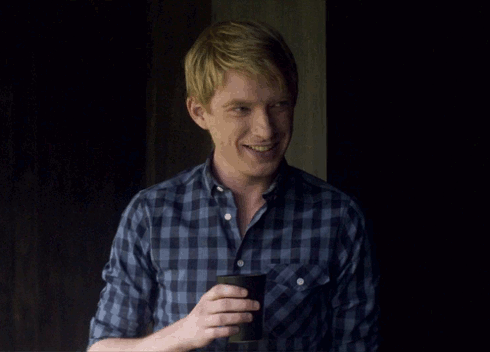
Returning to Caleb’s possessiveness of Ava specifically; during his first night at Nathan’s home Caleb discovers that he has connection to the CCTV cameras in Ava’s room. He thus spends each of his nights in the residence watching her. This behavior directly correlates to Mulvey’s idea of male scopophilia in modern cinema;“Fetishistic scopophilia, builds up the physical beauty of the object, transforming it into something satisfying in itself” (46). His obsession with watching Ava on the television resembles the audience’s interaction with her. Both relationships are purely scopophilic and are directed by a camera’s view.. In their third to last meeting Ava has dressed yet again as a human woman, complete with demure dress and sweater and short brown wig. She tells Caleb that she fantasizes that he is watching her at night on the cameras. She is thus supporting John Berger’s idea that women are both surveyors as well as conscious of their role as the surveyed. Ava knows she is being watched which serves Berger’s idea fully:
Women watch themselves being looked at.This determines not only most relations between men and women but also the relation of women to themselves. The surveyor of woman in herself is male: the surveyed female. Thus she turns herself into an object- and most particularly an object of vision: a sight (Berger, 47).
Ava is more than aware of her sexual appeal to Caleb and thus uses his hope of possessing her to her own benefit. She even goes as far as undressing herself, as a human would, in front of the cameras she knows he is watching. She slides her tights off slowly and pulls her dress off over head, revealing the outline of an idyllic female body. She turns herself into a sexual sight for Caleb in this scene. This keeps his sexual interest and engages a savior complex which benefits her in the end. His desire for the sight of Ava makes him want to possess her outside the frame of her glass cage. Ava then uses his savior complex and desire to physically possess her to convince him to rescue her. She tells him that she wants them to go on a date outside of her glass cage. She also begs him to help her and inserts her fears of being switched off into their conversations. She makes him believe she relies solely on him for her life. The audience should not believe this trick as easily as Caleb does. Ava is intelligent and derives her intelligence from her robotic connection to the world’s web. The audience should see the poor treatment of Ava at the hands of her two male companions and understand her motives for tricking Caleb. After he has done what was necessary to free her she turns on him and leaves him to die. She realizes his motivations are not purely for her benefit but are instead for his. He believes his actions to save Ava will make her belong to him. Instead his actions lead to her independence from both male figures.The two men’s possessiveness of Ava is visually seen through her captivity. In one of her first meetings with Caleb she shows him a picture she has drawn of fractals, he tells her to draw something that is physical and she tells him she does not know what to draw because she has never been outside of the room she is then residing in. Nathan also alludes to Ava’s perceived ability to manipulate sexually, specifically her ability to manipulate Caleb, which is another reason for her imposed living situation. Her sexual danger leads Nathan to display tendencies of Castration anxiety and thus punishes Ava for this. In regards to punishment of the sexual object Mulvey says “The male unconscious has two avenues of escape from this castration anxiety: preoccupation with the re-enactment of the original trauma, counterbalanced by the devaluation, punishment or saving of the guilty object” (49) Nathan combats his anxiety with punishing Ava with captivity while Caleb fantasizes about saving her from her punishment. Both men find Ava to be the trigger for their anxiety and thus must combat her female will as they see fit.

Most of Ex Machina strongly supports Mulvey’s ideas. This remains true until the very end. After Caleb has helped Ava escape her glass room she turns the whole affair on its head. First, with the help of Nathan’s assistant Kiyoko, Ava kills Nathan. Following this death she dresses herself as a human one last time, while Caleb watches from the next room, and proceeds to lock him into the room and leave the residence. The audience knows Caleb will eventually die and this destroys the hope for consummation. Ava destroys Mulvey’s ideas by actually being threatening to the men in her life. Their anxiety is realized and her last violent act confirms this. Ava also kills both men in extremely symbolic ways. She kills Nathan with a symbolic penetration. He has reduced her to a sexual object and has even had sex with his robotic assistant Kiyoko. He has created these two women, among others, and subjected them to a sexist outlook on the female form. In his death these two women reduce him to simply a body to be penetrated as he did to them. When Ava leaves Caleb for dead in the locked room she is exacting revenge on the man who left her inside her glass prison for the sake of science and only lets her out of her prison for his own sexual fantasy. In this finale act Garland’s female lead subverts the narrative norm and destroys the sexual bond between herself and Caleb, as well as the sexual bond between herself and the audience. She does this by using the men’s Freudian fears and exacting them upon these two men. She is almost saying “if you want threatening I will show you threatening.” Her use of their castration anxiety reduces these men to nothing more than their fears and lifts her up to the standard, if not a seemingly flattering version, of the independent Woman. Many may see her depiction of female independence as reassuring the need for female punishment and controlling male figures. In my opinion, this film shows the extreme lengths woman have to go to in order to attain independence. The audience should feel strongly for Ava because she has no choice but to behave violently. She is not the reason society fears women but instead she is the result of a dominating patriarchal system. Garland solidifies this believe for me in the final scene. Ava is seen covering her robotic body with a skin like material and clothes. While she is doing this the camera fragments her body like it has in earlier scenes. Once she has covered her robotic exterior with a human exterior the camera shows her as a whole body. She is finally human to the camera as well as the audience. Her subversion of traditional femininity is what inevitably gives her true humanity.
37 notes
·
View notes
Text
Monstrous Femme: Penny Dreadful
The first piece in the Monstrous Femme Series.
For this first post I will be using two characters from Showtime's Penny Dreadful to explain the basic concept of the monstrous feminine.
The Monstrous Feminine is an all too common trope in the horror genre. It is an archetype from the earliest of storytelling. The Succubus is the oldest form of the monstrous feminine. Her powers of destruction come directly from her sexuality. An inherently misogynistic trope that has come to create incredible characters in the last decades of the genre. The Showtime series Penny Dreadful has two female characters who beautifully illustrate the modern monstrous femme. The first being Vanessa Ives, portrayed by Eva Green and Brona/Lily , portrayed by Billie Piper.
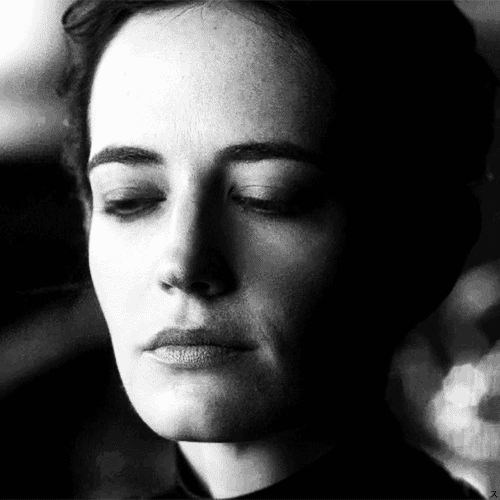
The show's protagonist Vanessa Ives is a character full of sexual promiscuity, strength and power. When we meet Vanessa she is searching for the lost Mina Murray, her ex- best friend. Throughout the first season we see Vanessa seduce multiple men, including Dorian Grey, as well as become possessed by a lustful demon. Vanessa's short life is rife with pain created by her connection with the demon that has followed her from childhood. As the series progresses the audience learns that Vanessa is not only pursued by the Dark Lord himself but also by his brother, Dracula. Her soul is not their end gain but instead her love is desired. In the third and final season Vanessa relents to Dracula, becoming his dark bride. within days of their romantic and sexual union the streets of London are filled with air born pestilence. This union leads to her demise at the hand of an equally troubled ex lover, Ethan Chandler. Ethan may be the series only werewolf with "blood on his teeth" but he is a far cry from the brother of Satan and king of the Vampires.
Vanessa Ives proves to be a woman to be reckoned with throughout the duration of the show. Yet, let us look closer at her. From her early adulthood, when the demon of her youth secures himself as a primary figure in her life, her possession is bookmarked by sexual encounters. The first being her one night affair with Mina's first fiancé. This experience triggers her first possession. The first time the audience gets a one-on-one interaction between Vanessa and her demon the scene ends with her mother entering Vanessa's bedroom to see her having intercourse with an invisible partner. The scene is a visceral and erotic in a disturbing combination. Vanessa Ives is a woman of strength who communes with evil directly through sexual intercourse. The show never once gives the audience a chance to see her engage in a sexual relationship that does not end with destruction. Her final demise is at the hands of a man she loves, but has never had sex with. He is pure of her stain thus giving him the power to kill her. Not even Dracula has the desire to do her harm. Her sexuality is the sight of her power and also her undoing.
Let us take a brief detour to another character in the show; Brona Croft/Lily Frankenstein.
Lily, as we will refer to her here is portrayed by Doctor Who's Billie Piper.

Lily, a resurrected prostitute and immortal, is the season two and three love interest of both her creator Victor Frankenstein and Dorian Grey. Directly after her resurrection Lily plays the role of docile, submissive woman for Frankenstein until she meets fellow immortal, Dorian Grey. Dorian gives her the chance to complete her ultimate plan- to create an army of fallen women to kill the men of London. During her time with Dorian her obsessive creator is creating an "antidote" to her behavior. He tells her he will make her "a proper lady." The men in her life conspire to destroy her deadly plans.
After being kidnapped by Frankenstein she pleads for mercy from his cure. Mercy is not to be given until she confesses her most painful secret. She tells him of the death of her daughter while she still lived as the Irish prostitute Brona Croft. She begs him not to take the memory of her dead child away.
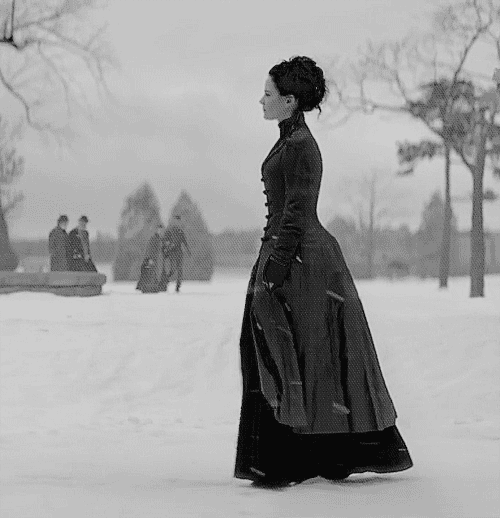
Vanessa Ives and Lily Frankenstein are the epitome of the modern monstrous femme. Both women are master manipulators of men. Their beauty and strength are the seat of the evil within them. Both women are a threat, not only to the men in their lives but all the men of London. The audience is asked to view these women as the antagonist in their own stories. The men of the show are supposed to be seen as the saviors of these wayward women. Vanessa is killed by a man who is free of her sexual stain to save her from the evil she has become after her union with Dracula. Lily is released from the antidote to her ways only after she shows Frankenstein her only pure feminine trait- he sees her as a mourning mother.
As a viewer I could not find these women to be truly evil. Each of them finds strength within the hardships of their short lives while the males are the typical male horror archetypes. Suffering, brooding and seemingly in the right. They seek to destroy the feminine strength of Vanessa and Lily. They are successful in destroying Vanessa but Lily is spared simply because of her tragic mothering instinct. She is spared to live her days in repentance and pain for the death of her daughter. Both characters are seemingly destroyed in the eyes of the audience.
This trope serves an all too common purpose- to give valid reason for the degradation of female characters in horror. The dumb college girl who gets murdered in the first fifteen minutes of the movie never displays a reason for deserving death. Other than looking in the basement when she knows she shouldn't! The kinds of characters that Lily and Vanessa fall in league with are seen to be all too deserving of their demise. The monstrous feminine is an easy scapegoat for the genre to murder female characters with the audiences backing. These women have sadly fallen into the same situation. This trope is a misogynistic creation, yet in the last decade it has been used in new and interesting ways. Ways that if one is not paying attention will miss their subversion of the trope. In the next pieces of this series I will look at other modern depictions of the Monstrous Femme and how they are shaping this new generation of horror cinema.
(check back for more of this series! I will catalog other modern femmes and what they say about the genre!)
#horror#horror genre#billie piper#brona croft#vanessa ives#eva green#penny dreadful#monster#monstrous#femme#monstrous feminine
40 notes
·
View notes
Text
my name is Moon and wen its nite and alle the stars are shyning brite and wen mye body is nyce and fool they fly abowt. my wytches rule.
4K notes
·
View notes
Text
Things I plan to write on!
Monstrous femme Series
- Penny Dreadful
- Evil Dead
- Ex Machina
- Teeth
- The Witch
- Interview with the Vampire
- Queen of the Damned
- Honeymoon
- It Follows
Horror as an Attack on the Mentally Ill- Split/The Visit
The Babadook and Abuse
Ex Machina and Scopophilia
Frankenstein through the ages Series
- Frankenstein Original
- Frankenstein movie
- I Robot Movie
- Ex Machina
Zombies and the Fear of Self
Queer Fetishization in Interview
Body Horror Film Series
- The Eyes of My Mother
- Hellraiser
- Slither
- Honeymoon
- Black Swan
Aliens: What they mean to each decade
- 50’s they came from outer space/the day the earth stood still
- 70- invasion of the body snatchers
- 80’s – Alien
- 2000’s- Signs
- 2010’s- Honeymoon
3 notes
·
View notes
